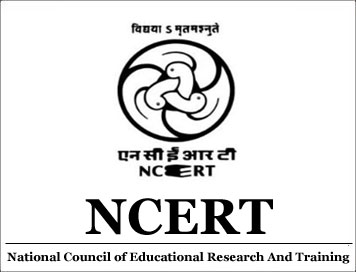(Download) NCERT Revised syllabus Of Chemistry (Class 11 to 12 )
Rationale
Higher Secondary Stage is the most crucial stage of school education because at this stage specialised discipline based, content oriented courses are introduced. Students reach this stage after 10 years of general education and opt for Chemistry with a purpose of mostly for pursuing their career in basic sciences or professional courses like medicines, engineering, technology and studying courses in applied areas of science and technology at tertiary level. Therefore, at this stage, there is a need to provide learners with sufficient conceptual background of Chemistry, which will make them competent to meet the challenges of academic and professional courses after the higher secondary stage.
National Curriculum Framework for School Education – 2005 recommends a disciplinary approach with appropriate rigour and depth with the care that syllabus is not heavy and at the same time it is comparable to the international level. It emphasizes a coherent focus on important ideas within the discipline that are properly sequenced to optimize learning. It recommends that theoretical component of Higher Secondary Science should emphasize on problem solving methods and the awareness of historical development of key concepts of science be judiciously integrated into content. The present exercise of syllabus development in Chemistry at Higher Secondary Stage is based on this framework.
Salient features of the present syllabus are thus:
Some background of Chemistry from secondary stage is assumed; however, no specific knowledge of topics in Chemistry is pre-supposed.
The course is self-contained and broadly covers fundamental concepts of Chemistry.
Attempt has been made to see discipline of Chemistry does not remain only the science of facts but becomes related to modern applications in the world around us.
The syllabus provides logical sequencing of the ‘Units’ of the subject matter with proper placement of concepts with their linkages for better understanding.
Emphasis has been on promoting process – skills, problem solving abilities and applications of concepts of Chemistry useful in real life situation for making learning of Chemistry more relevant, meaningful and interesting.
An effort has been made on the basis of feedback, to remove repetition besides reducing the content by suitably integrating the different content areas.
Practical syllabus has two components. There are core experiments to be undertaken by the students in the classroom and will be part of examination while each student will carry out one investigatory project and submit the report for the examination. With this background, the Chemistry curriculum at the higher secondary stage attempts to
promote understanding of basic principles in Chemistry while retaining the excitement in Chemistry;
develop an interest in students to study Chemistry as discipline;
strengthen the concepts developed at the secondary stage and to provide firm foundation for further learning of Chemistry at tertiary level more effectively;
develop positive scientific attitude, and appreciate contribution of Chemistry towards the improvement of quality of human life;
develop problem solving skills and nurture curiosity, aesthetic sense and creativity;
inculcate values of honesty, integrity, cooperation, concern for life and preservation of the environment;
make the learner realise the interface of Chemistry with other disciplines of science such as Physics, Biology, Geology, etc;
equip students to face challenges related to health, nutrition, environment, population, whether industries and agriculture.
CHEMISTRY CLASS XI
Theory Total Periods 180
Unit I: Some Basic Concepts of Chemistry (Periods 14)
General Introduction: Importance and scope of chemistry.
Historical approach to particulate nature of matter, laws of chemical
combination, Dalton’s atomic
theory: concept of elements, atoms and molecules.
Atomic and molecular masses. Mole concept and molar mass; percentage composition and empirical and molecular formula; chemical reactions, stoichiometry and calculations based on stoichiometry.
Unit II: Structure of Atom (Periods 16)
Discovery of electron, proton and neutron; atomic number, isotopes and isobars. Thompson’s model and its limitations, Rutherford’s model and its limitations, Bohr’s model and its limitations, concept of shells and subshells, dual nature of matter and light, de Broglie’s relationship, Heisenberg uncertainty principle, concept of orbitals, quantum numbers, shapes of s, p, and d orbitals, rules for filling electrons in orbitals – Aufbau principle, Pauli exclusion principle and Hund’s rule, electronic configuration of atoms, stability of half filled and completely filled orbitals.
Unit III: Classification of Elements and Periodicity in Properties (Periods 8)
Significance of classification, brief history of the development of periodic table, modern periodic law and the present form of periodic table, periodic trends in properties of elements – atomic radii, ionic radii, inert gas radii, ionization enthalpy, electron gain enthalpy, electronegativity, valence.
Unit IV: Chemical Bonding and Molecular Structure (Periods 16)
Valence electrons, ionic bond, covalent bond, bond parameters, Lewis structure, polar character of covalent bond, covalent character of ionic bond, valence bond theory, resonance, geometry of covalent molecules, VSEPR theory, concept of hybridization involving s, p and d orbitals and shapes of some simple molecules, molecular orbital theory of homonuclear diatomic molecules (qualitative idea only), hydrogen bond.
Unit V: States of Matter: Gases and Liquids (Periods 14)
Three states of matter, intermolecular interactions, type of bonding, melting and boiling points, role of gas laws in elucidating the concept of the molecule, Boyle’s law, Charles’ law, Gay Lussac’s law, Avogadro’s law, ideal behaviour, empirical derivation of gas equation, Avogadro’s number, ideal gas equation, deviation from ideal behaviour, liquefaction of gases, critical temperature. Liquid State – Vapour pressure, viscosity and surface tension (qualitative idea only, no mathematical derivations).
